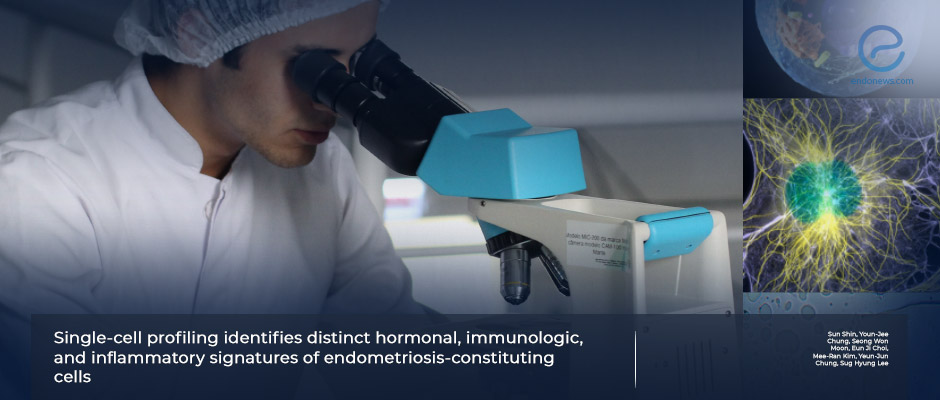Cells Constituting Endometriosis Have Different Properties
Dec 27, 2023
The hormonal, immunologic, and inflammatory properties of cells constituting endometriosis are different compared to normal endometrium, and depending on endometriosis types and location.
Key Points
Highlights:
- May cell types are altered in endometriosis.
- Endometriosis cells show different signatures depending on the type of endometriosis.
- Interactions between the different types of cells in endometriosis may be important for the development and progression of the disease.
Importance:
- This information can help better understand the disease, identify types of endometriosis that are more aggressive, and develop potential new therapies.
What’s done here:
- Cells in different types of endometriosis from 12 women were investigated.
Key results:
- Ectopic endometrial stromal cells showed high estrogen and progesterone responsiveness signatures.
- Lymphoid cells showed signs of immune activation and exhaustion in endometriosis.
- The signatures and subpopulations of macrophages were different in different types of endometriosis.
- Myofibroblast subpopulations were different depending on the location of endometriosis.
- Endothelial cells in endometriosis showed signatures of proinflammation, angiogenesis, and leaky permeability.
Limitations:
- This sample size is quite small with just 12 women.
Lay Summary
Many cell types are altered in endometriosis, found a new study published in the Journal of Pathology. The study also found that depending on the subtype of endometriosis, endometriosis cells show signatures of estrogen responsiveness, immunologic cytotoxicity, and proinflammation. Finally, it identified novel cellular interactions that could be meaningful for the development and progression of the disease.
“Our results may help extend pathologic insights, dissect aggressive diseases, and discover therapeutic targets in endometriosis,” the authors of the study said.
In order to better understand the difference between cells and normal cells and cells in different types of endometriosis, a team of researchers from the Republic of Korea led by Dr. Sug Hyung Lee analyzed ovarian endometrial cysts, superficial peritoneal endometriosis, and deep infiltrating endometriosis from 12 women.
The researchers identified 11 cell clusters. These included ectopic endometrial epithelial cells, ectopic endometrial stromal cells, fibroblasts, inflammatory and immune cells, endothelial cells, mesothelial cells, and Schwann cells.
When the authors analyzed the hormonal signature of the cells, they found that ectopic endometrial stromal cells showed high estrogen and progesterone responsiveness signatures compared to normal endometrium. In contrast, ectopic endometrial epithelial cells did not show such signatures. Lymphoid cells showed signs of immune activation and exhaustion.
When they compared the different types of endometriosis, the researchers found that the signatures and subpopulations of macrophages were “remarkably different”. Specifically, monocyte-derived macrophages and IL1B expression were increased in deep infiltrating endometriosis. Moreover, depending on the location of the endometriosis, myofibroblast subpopulations were different. Endothelial cells in endometriosis showed signatures of proinflammation, angiogenesis (or new blood vessel formation), and leaky permeability. These were even more pronounced in the case of deep infiltrating endometriosis.
More research is needed to better understand the exact role of each type of cell in the pathophysiology of endometriosis.
Research Source: https://pubmed.ncbi.nlm.nih.gov/37807404/
deep infiltrating endometriosis endometriosis type cellular signature.

